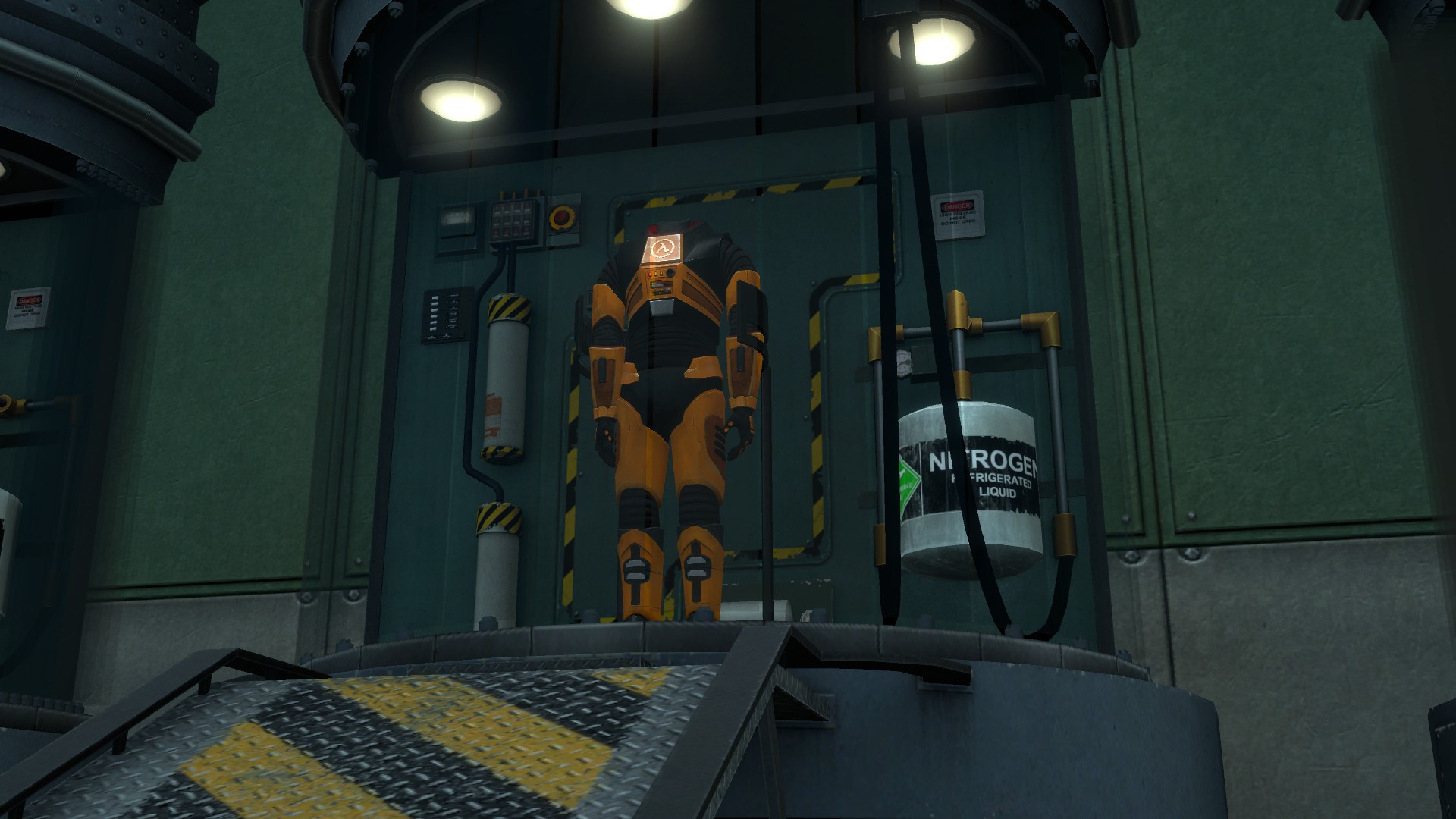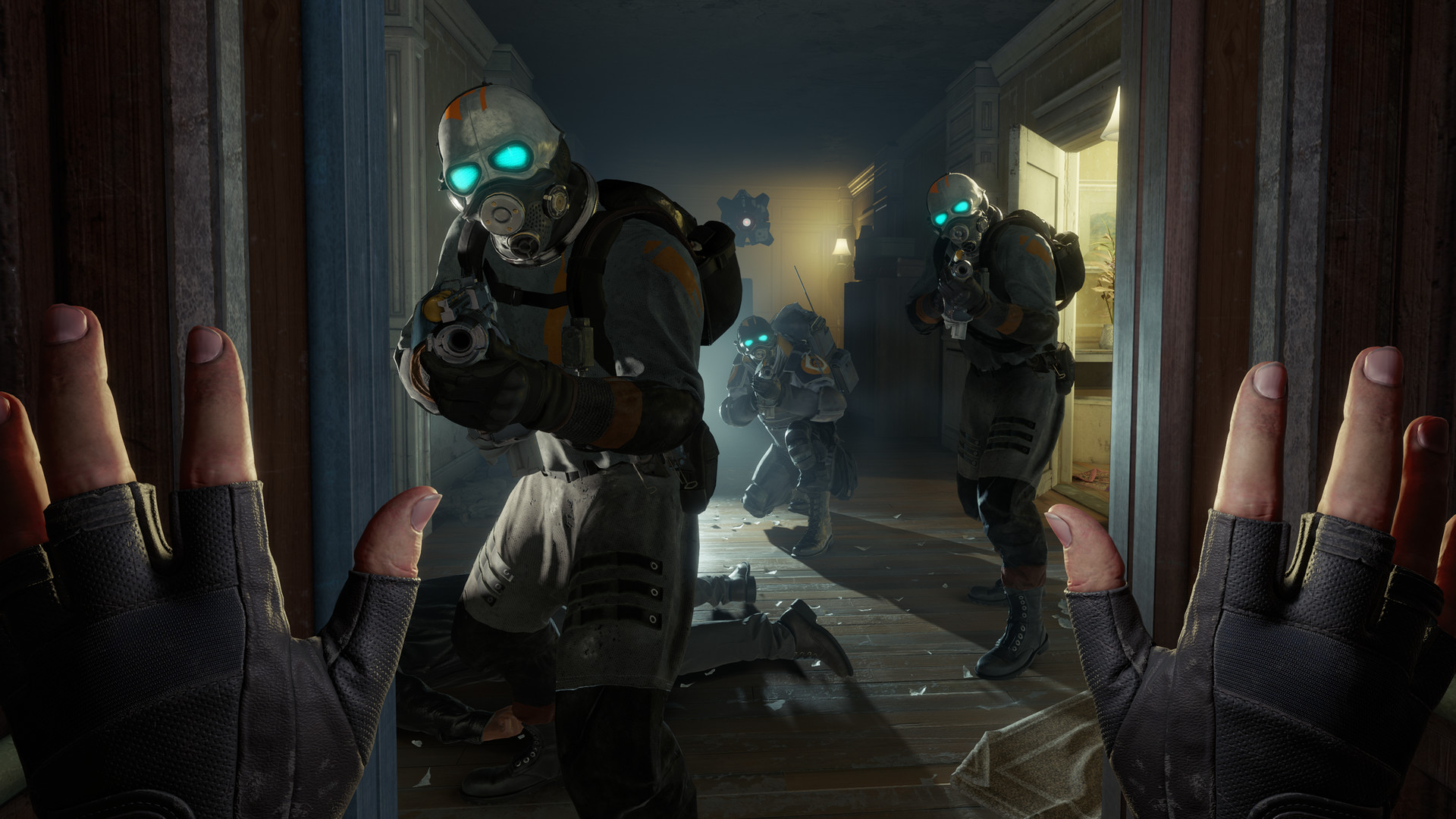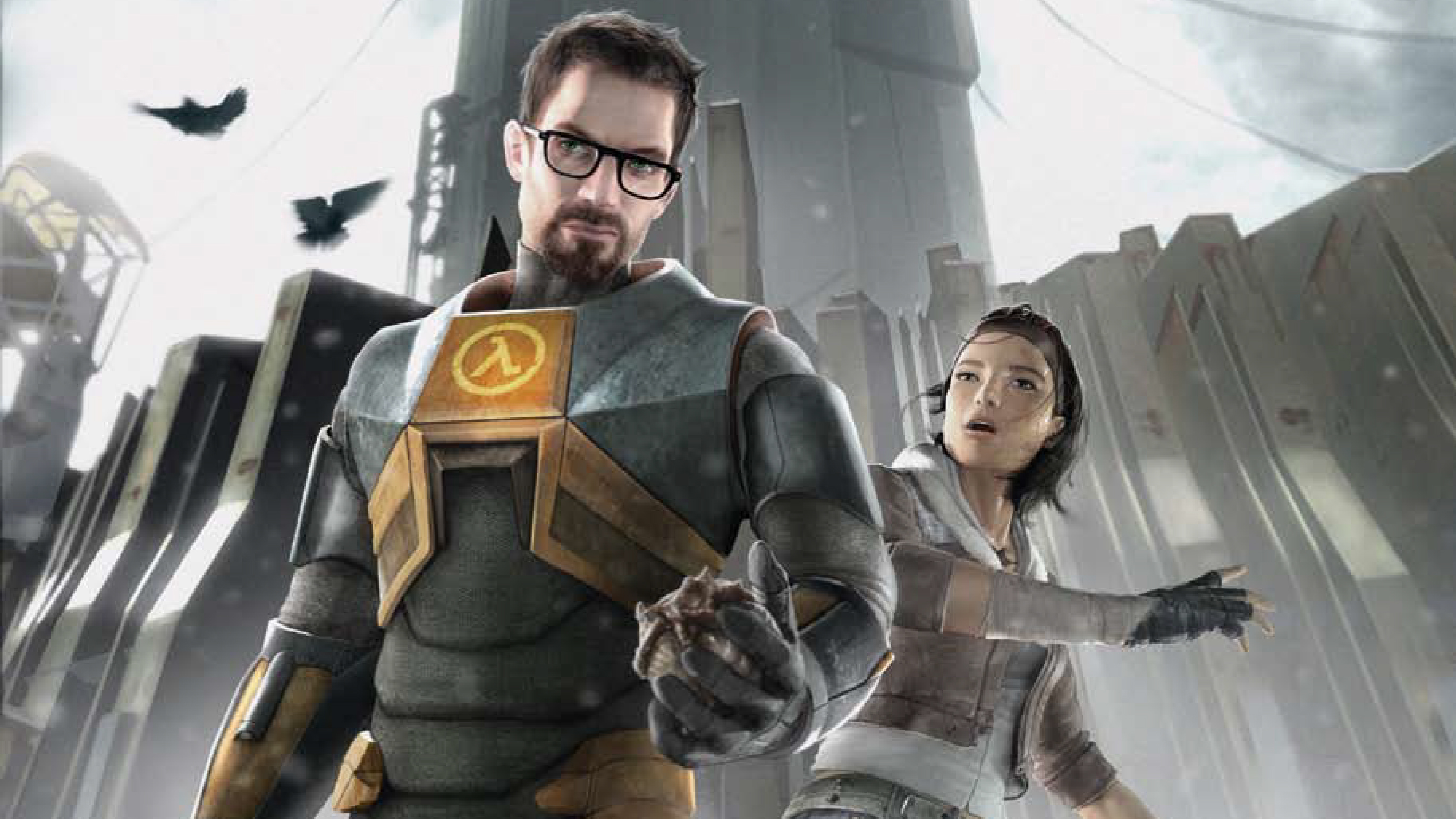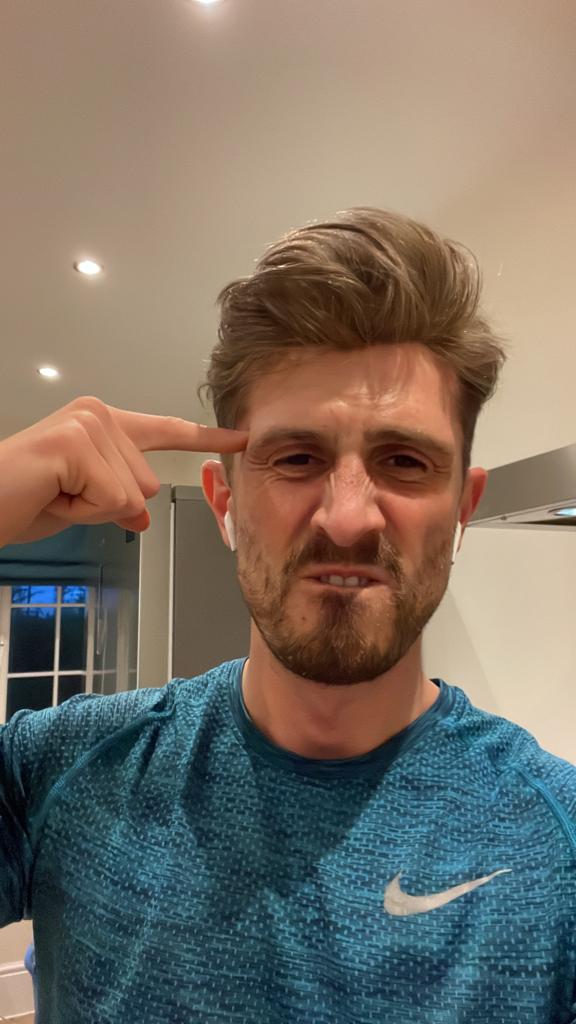Half-Life’s remakes, de-makes and fan sequels show why Half-Life 3 was a no-go
Anomalous material

I’m playing Black Mesa at the moment. As I do, its developer Crowbar Collective is talking about re-remaking its Source Engine take on Half-Life… in the original 1998 GoldSrc engine. Elsewhere, a fan-made, unofficial sequel to Opposing Force called Through The City is doing the rounds, and features some of the original Gearbox expansion’s voice cast reprising their roles.
To me, all this activity, like the previous 20 years and change of modding around Valve’s seminal shooter, tells us one thing above all else: that no amount of modern tech, streamlined development efficiency or accumulated design wisdom can match that original freak of nature.
In other words, Half-Life is unimprovable.
It can’t be modernized without losing something essential to its quality in the process. Not even the most talented creators can riff on it without coming off a clear second-best to their source material - sorry, GoldSrc material.
Black Mesa’s not bad, mind you. I’m glad it exists, and grateful to Crowbar Collective for pouring unimaginable hours into rebuilding that pivotal moment for shooter-kind with Half-Life 2 assets, vastly better lighting and contemporary design flourishes. Together, those updates amplify the original’s intention to wow us with set pieces – and to combine cinematic awe with a convincing flow of unbroken time.
The remake’s definitely strongest in the early levels. Up until roughly On a Rail, Black Mesa plays it pretty close to the original game’s geography, pacing, and even NPC placement. In these levels, you’re seeing Half-Life the way you saw it in your mind’s eye in 1998, with the details no longer filled in by your imagination but by real, increased fidelity. There are rare moments along the way of the old magic, even.
Revisionist history

But as Black Mesa goes on, it allows itself more creative license. By the time you hit Surface Tension, now a two-plus hour saga in the New Mexico desert, you’re not playing Half-Life anymore. That’s by design – Crowbar Collective always intended to expand on the original creative vision and deliver in ways that weren’t possible with the tech of the time. But as you play it, you wonder who it’s really serving. Surely nostalgia is a huge part of any player’s motivation here. Take that away, and the content lives and dies purely on its pacing, design, and the intrinsic enjoyment of combat encounters.
Get daily insight, inspiration and deals in your inbox
Sign up for breaking news, reviews, opinion, top tech deals, and more.
So many teams of modders and professional studios had given it a go already and failed to hit the mark
And they can’t meet Valve’s bar. Black Mesa certainly suffers by inviting comparison to the best shooter ever made. If you try and take Surface Tension on its own terms, you might be impressed: it gives you variety and a sense of unraveling military control, the chaos of government troops trying to fight a war against an unknowable and frighteningly powerful enemy. But it doesn’t do those things so well that you’re not wondering when Forget About Freeman’s going to arrive.
As you beam yourself from the Lambda lab out to Xen, all bets are off. It’s like watching Blade Runner 2049 or the latest bi-weekly Spider-Man reboot. Valve’s game is in there somewhere, but it’s buried deep beneath modern interpretation – all those conveyor belts and power cables for you to plug in. By the time the giant baby goes down, you wonder whether it might not have been more satisfying to just play Half-Life instead.
That tells us a lot about Valve’s predicament when it came to making a threequel. We were always aware, as fans, that the expectations we pitched for any subsequent content bearing a Lambda sign would be almost impossibly high. But what we didn’t consider was that so many teams of modders and professional studios (Opposing Force, Blue Shift, Gunman Chronicles, ad infinitum) had given it a go already and failed to hit the mark. And we’d played all of those projects, being obsessive fans hungry for balsa wood boxes to smash with crowbars, so we’d become extremely familiar with every facet of Half-Life’s formula. We had oversaturation to add to our expectation problem.
Stealth threequel

In the end, Valve got around its Half-Life 3 problem in a sneaky move by calling it Half-Life: Alyx – and ensuring only about 300 people would ever play it by making it a VR title. It’s pretty good, too. Picking up a pistol and shooting a headcrab zombie for the first time in Alyx feels special. A bit magical.
But it’s immediately apparent that Alyx is using Half-Life 2 as its anchor, visually and narratively. It’s using the advent of new tech to make the FPS genre feel fresh and more immersive than before, just as Half-Life did in ‘98 by leaning on 3D polygonal graphics, and its sequel did with the introduction of advanced physics.
But what it’s not doing is taking a big leap forwards into the unknown creatively, like its predecessors did. Half-Life didn’t look like anything else at the time. There weren’t NPCs milling around and saying voiced lines of dialogue or fighting by your side in the shooters that came before. There certainly weren’t spectacular scripted sequences every few minutes. Nothing looked or played like its sequel either – with an engine capable of striking realism, and a new Orwellian angle to its story. Booping Combine on the head with water bottles using a gravity gun, dodging Strider legs in Eastern Bloc city squares – these things felt essentially Valve-ian, not because they resembled the first game but because they were so carefully thought about and implemented.
Alyx makes VR seem easy, effortless, and natural. That’s an incredible achievement for a developer. Yet, to put it unkindly, it’s hiding behind VR for fear of being exposed as merely a very good modernized spin on Half-Life 2.
And that’s why we can’t have nice things. Because we went looking for them almost constantly after Half-Life’s release, and because both amateur and professional developers served that appetite to some degree ever since.
Flatlands

Valve’s famous flat hierarchy means people aren’t hired to join specific projects. Instead, they choose what to work on, and projects only ever get off the ground if enough people support and commit to them internally. Against this backdrop of Half-Life content and its community reception, you can understand why a game called Half-Life 3 never got off the ground.
Whoever drank from its poisoned chalice would be putting immeasurable pressure on themselves to deliver the single greatest videogame made to date
Whoever drank from its poisoned chalice would be putting immeasurable pressure on themselves to deliver the single greatest videogame made to date. Best case scenario would be years of long hours, sleepless nights and competing creative visions. Worst case scenario: being responsible for trashing the studio’s reputation, sullying the best-loved shooter franchise in history and receiving the kind of DMs that Cyberpunk 2077 devs are all too familiar with.
I suppose that means we shouldn’t lament a second sequel’s absence, or feel disappointed that it turned up as Half-Life Alyx instead. It’d never be as good as the game that manifests in our heads when we see the words Half-Life 3. Fortunately, we’re always free to just go and play the first one again.

Ad creative by day, wandering mystic of 90s gaming folklore by moonlight, freelance contributor Phil started writing about games during the late Byzantine Empire era. Since then he’s picked up bylines for The Guardian, Rolling Stone, IGN, USA Today, Eurogamer, PC Gamer, VG247, Edge, Gazetta Dello Sport, Computerbild, Rock Paper Shotgun, Official PlayStation Magazine, Official Xbox Magaine, CVG, Games Master, TrustedReviews, Green Man Gaming, and a few others but he doesn’t want to bore you with too many. Won a GMA once.